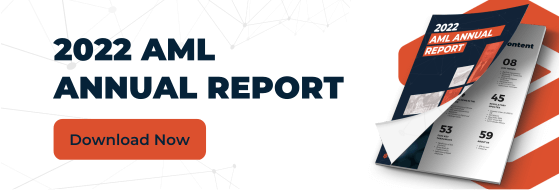The Basel Institute on Governance published the 11th Basel AML Index, which measures the risks of ML/TF of countries last week for the year 2022. The report examines the risk values of the countries publicly on a country-by-country basis, with the highest risk score being 10, within the framework of the methodology determined by the institution.
Looking at the whole report, it is seen that the average risk score of 128 countries included in the report was 5.25 (this average was 5.30 last year).
In order to understand the background of the country evaluations made by the Basel AML Index document and to make a healthy evaluation, the criteria that form the basis of the report are given below. The report is based on a composite methodology with 18 indicators categorized into the five areas listed below in accordance with the five key factors considered to contribute to a high money laundering/terrorist financing risk.
Domain 1: Quality of AML / CFT Framework (65%)
- FATF: Mutual Evaluation Reports and Follow-up Reports (35%)
- Tax Justice Network: Financial Secrecy Index (15%)
- US Department of State: International Narcotics Control Strategy Report (INCSR) (5%)
- US Department of State: Human Trafficking Report (5%)
- Global Organized Crime Index – Flora, fauna, non-renewable resources (5%)
Domain 2: Risk of Corruption (10%)
- Transparency International: Corruption Perceptions Index (5%)
- TRACE: Bribery Risk Matrix (5%)
Domain 3: Financial Transparency and Standards (10%)
- World Bank: Scope of Corporate Transparency Index (2.5%)
- WEF: Global Competitiveness Report – The strength of auditing and reporting standards (5%)
- World Bank: IDA Resource Allocation Index – Financial sector regulations (2.5%)
Domain 4: Public Transparency and Accountability (5%)
- International IDEA: Political Finance Database – Political disclosure (1.66%)
- International Budget Partnership: Open Budget Index – Budget transparency score (1.66%)
- World Bank: IDA Resource Allocation Index – Transparency, accountability and corruption in the public sector (1.66%)
Domain 5: Legal and Political Risk (10%)
- Freedom House: Freedom in the World – political rights and civil liberties (1.67%)
- Reporters Without Borders: World Press Freedom Index (0.83%)
- WEF: Global Competitiveness Report – Institutional basis (2.5%)
- WEF: Global Competitiveness Report – Judicial independence (2.5%)
- World Justice Project: Rule of Law Index (2.5%)
As can be easily seen above, although the country risk score is determined according to 18 criteria, the FATF country risk assessment reports and lists alone play a major determining role. At this point, it should be noted that in cases where all 18 data sets above for 128 countries included in the ranking cannot be accessed, the overall score of the relevant country is calculated based on the only available data. In the evaluation of the above-mentioned main titles on the basis of country averages, it is seen that only the average of "Quality of AML / CFT Framework" improved compared to the previous year, while the global average in the other 4 titles fell behind the previous year.
Some highlights from the Basel AML Index 2022 report are given below;
- In the fight against financial crimes, most countries stayed behind criminals seeking to launder illegal funds,
- Governments, as well as financial institutions and other reporting agencies, are generally getting better at assessing money laundering risks and applying a risk-based approach to addressing them, while risks persist in areas where criminals act fast and innovate (e.g.: crypto assets),
- Authorities are progressing very slowly in areas that have long been weak spots for money laundering/terrorism financings, such as ultimate beneficiary transparency and international cooperation
The countries that are the subject of the report are also divided into 7 different regions, and the risk averages and the highest risk areas are determined on a regional basis. The average risk score of the countries in the Eastern Europe and Central Asia region has been determined as 5.30, which is very close to the global average (5.25). While the weakest areas for this region were stated as political and legal risks, corruption, and bribery, it was stated that the risks in these areas increased above the world average. For Belarus, Russia, and in particular, Uzbekistan, attention has been drawn to the political and legal risks involved in the rule of law, free media, and the power and independence of the judiciary and other institutions.
In the table below, regional risk scores and the weakest area in terms of the determined criteria are listed;
| REGION | AVARAGE RISK SCORE | WEAKNESS |
| European Union and Western Europe | 3,97 | Quality of AML / CFT frame-Particularly the effectiveness of audit |
| Eastern Europe and Central Asia |
5,30 | Prosecution of money laundering crimes |
| East Asia and the Pacific |
5,48 | Quality of AML / CFT frame |
| Latin America and the Caribbean |
5,34 |
Financial transparency and accountability |
| Middle East and North Africa | 4,93 | Non-proliferation of weapons of mass destruction |
| North America | 4,23 | Quality of AML / CFT frame |
| South Asian | 6,02 | Quality of AML / CFT frame |
| Sub-Saharan Africa | 6,58 | Quality of AML / CFT frame |
The information and assessments given above have been prepared by taking into account the publicly available version of the BASEL AML Index 2022 report available at https://index.baselgovernance.org/. The version of the report, which covers 203 countries/regions around the world and includes additional features such as updates and detailed analysis every quarter, can be obtained from the relevant website for a fee.





